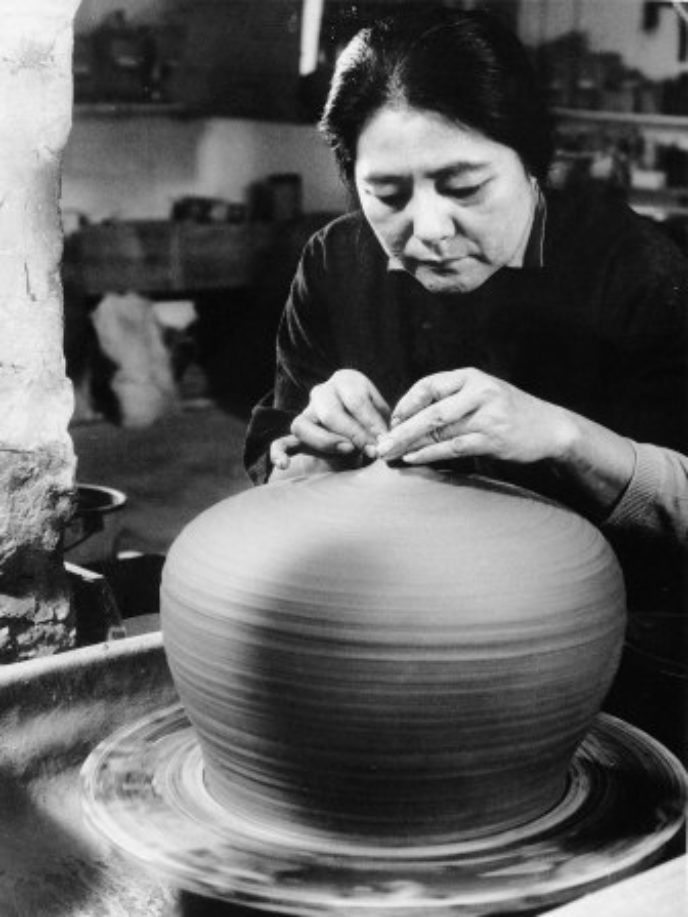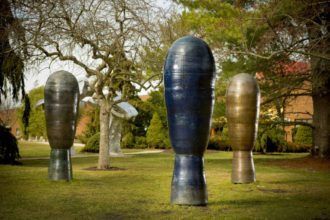Born in Hawaii in 1922, to Japanese immigrant parents, Takaezu initially worked at a commercial clay studio and pursued her interest in ceramics at the University of Hawaii, under the tutelage of Claude Horan. In 1951, she continued her studies at the Cranbrook Academy of Arts in Bloomfield Hills, MI. At the Academy she met and befriended Finnish ceramist, Maija Grotell, who became her mentor. Following, in 1955, Takaezu traveled to Japan where she studied Buddhism and the techniques of traditional Japanese pottery which continue to influence her work. Upon her return to the United States, Takaezu accepted a teaching position as head of the Ceramics Department at the National Cleveland Institute of Art in Ohio. She received the Tiffany Foundation Grant in 1964, which afforded her the opportunity to establish a studio in Quakertown, NJ and to devote her time to her artwork.
Toshiko Takaezu’s work is included in numerous collections all over the world, including the Smithsonian Institution, Washington, D.C.; the Museum of Contemporary Crafts and the Metropolitan Museum of Art, both in New York City, NY; the Philadelphia Museum of Art, Philadelphia, PA; the Baltimore Museum of Art in Maryland; and the National Museum of Bangkok, Thailand, among many more. Takaezu worked in her studio and gardens in Quakertown, New Jersey. She had a solo exhibition of her work was featured at the Philadelphia Museum of Art, entitled The Poetry of Clay: The Art of Toshiko Takaezu. She was the recipient of various honors and awards such as the Gold Medal of the American Craft Council, the Human Treasure Award from the University of North Carolina, several honorary doctorate degrees, and had been named a Living Treasure of Hawaii.

